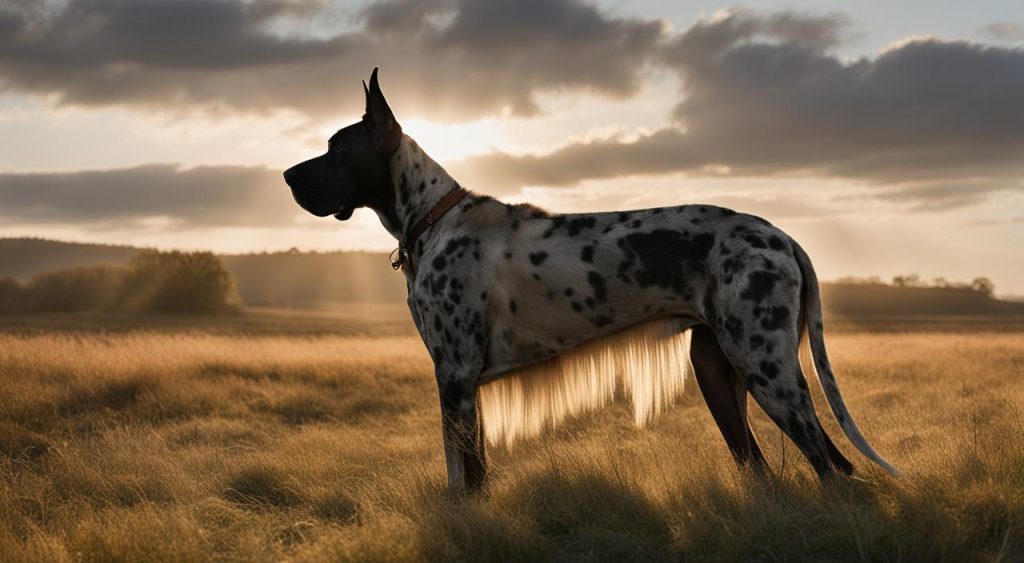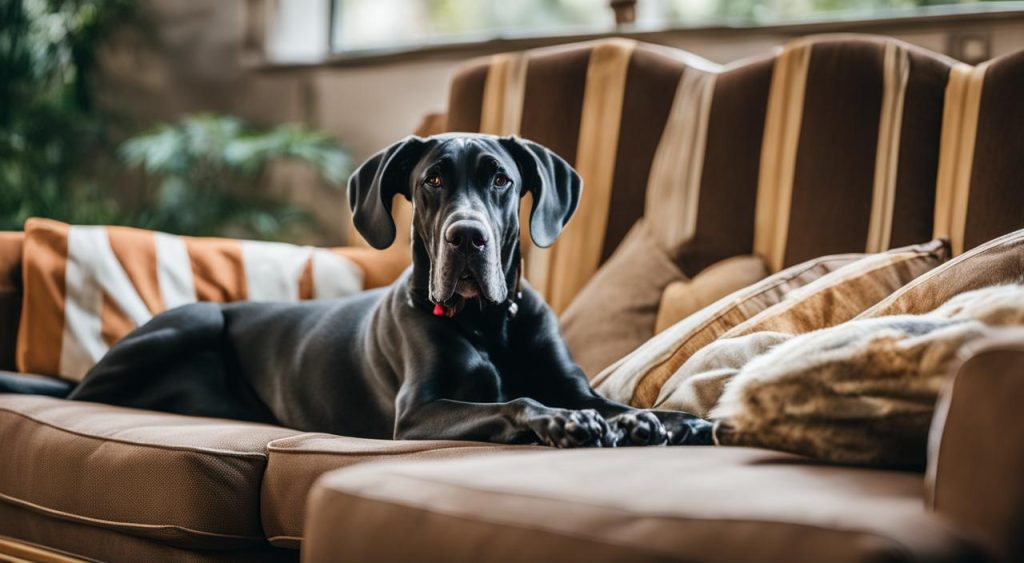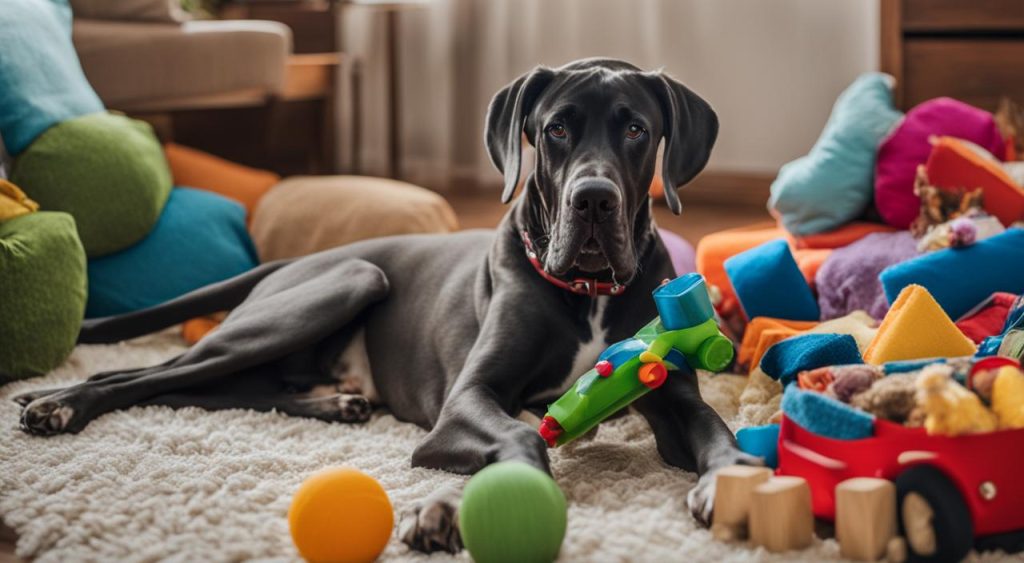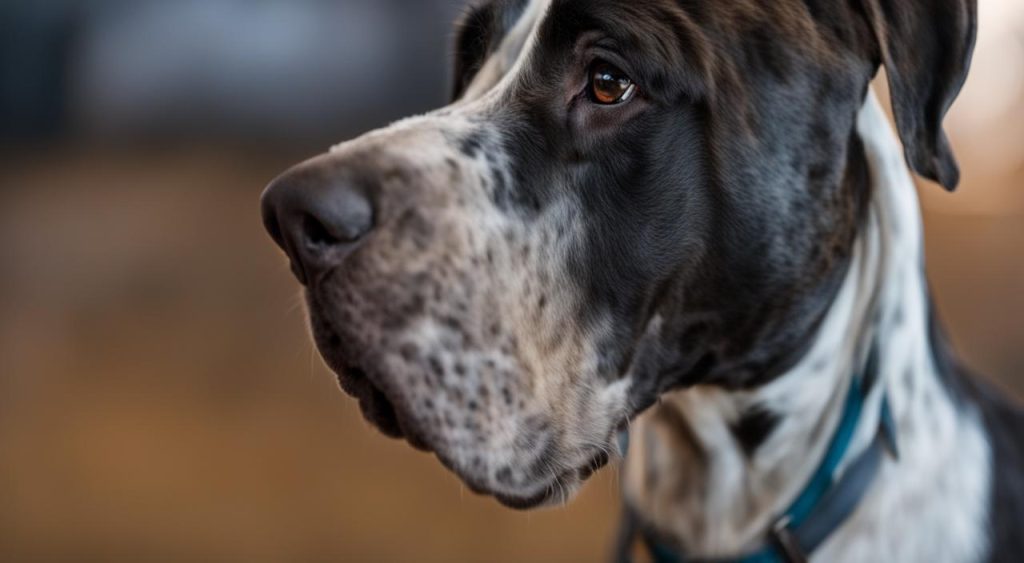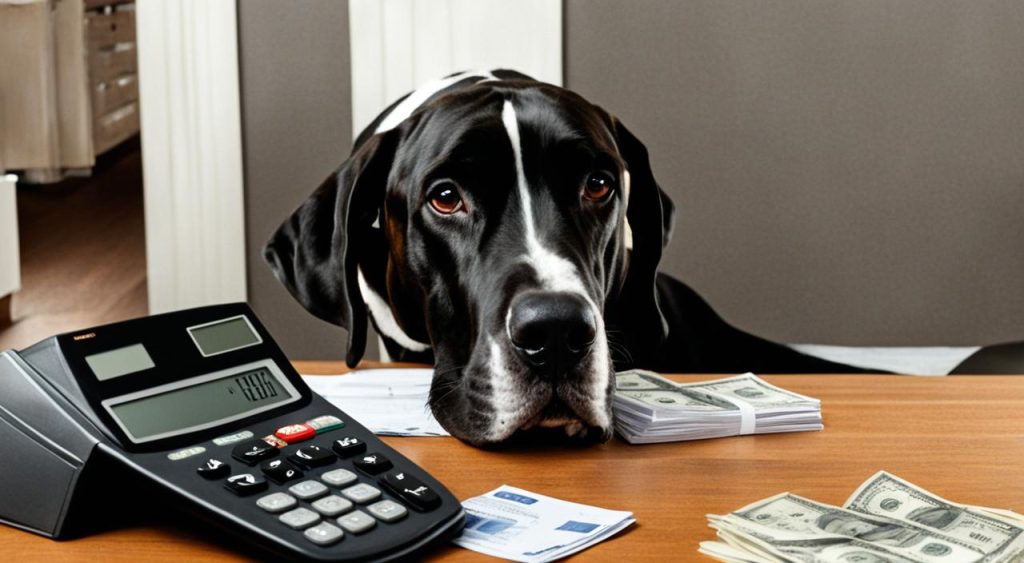Great Danes are known for their majestic size and gentle nature, but do they shed a lot? While they are not the worst shedders in the canine kingdom, Great Danes do shed a fair amount of hair. Their shedding is influenced by various factors, including genetics, nutrition, health, and the environment.
Unlike double-coated breeds, Great Danes have a single coat. However, due to their large size, there is more surface area covered in hair, resulting in more loose hair around your home. Shedding occurs throughout the year, with heavier shedding during the seasonal changes in spring and fall.
To control shedding in Great Danes, regular grooming is essential. Brushing their coat at least once a week with a gentle brush can help remove loose hair and minimize shedding. Additionally, feeding them a high-quality diet with essential nutrients and keeping up with preventative medications can help keep their coat healthy and reduce excessive shedding.
Key Takeaways:
- Great Danes shed a fair amount of hair, although not as much as some other breeds.
- Their shedding is influenced by genetics, nutrition, health, and the environment.
- Regular grooming, including brushing their coat, can help manage shedding.
- Feeding a high-quality diet and addressing any health issues is important in controlling shedding.
- Seasonal shedding occurs in spring and fall, with more hair being shed during these times.
Understanding Great Dane Shedding
Great Dane shedding is influenced by various factors, including genetics, nutrition, health, and the environment. Despite having a single coat, Great Danes can still shed a fair amount of hair. Understanding the shedding phases and the factors that contribute to shedding can help you manage this aspect of owning a Great Dane.
The shedding cycle in Great Danes consists of two main phases: natural shedding and seasonal shedding. Natural shedding occurs throughout the year, as old hair is replaced by new hair. Seasonal shedding, on the other hand, happens during the transitional periods of spring and fall.
Genetics play a significant role in shedding. Some Great Danes may naturally shed more than others due to their individual genetic makeup. While it’s impossible to completely eliminate shedding, understanding your Great Dane’s genetic predisposition can help you better manage their shedding.
Nutrition and overall health also impact shedding in Great Danes. Feeding your Great Dane a balanced diet that is rich in high-quality protein, healthy fats, and essential vitamins and minerals can promote a healthy coat and potentially reduce shedding. Additionally, addressing any underlying health issues can help minimize excessive shedding.
The environment can be another influencing factor in Great Dane shedding. Temperature, humidity, and exposure to pollutants can all affect the shedding process. Extreme weather conditions, such as hot summers or cold winters, can trigger shedding. Ensuring that your Great Dane has a comfortable and clean living environment can help minimize shedding caused by environmental factors.
In summary, understanding the factors that influence shedding in Great Danes, such as genetics, nutrition, health, and the environment, can help you manage their shedding effectively. While shedding is a natural process for Great Danes, incorporating a balanced diet, addressing health issues, and providing a suitable living environment can help minimize excessive shedding and keep your Great Dane’s coat healthy and manageable.
Grooming Techniques for Great Danes
Managing shedding in Great Danes requires regular grooming to keep their coats healthy and minimize loose hair. Here are some effective grooming techniques:
Brushing Techniques: Brush your Great Dane’s coat regularly, at least once a week, using a gentle brush. This helps remove loose hair, prevents matting, and distributes natural oils throughout the coat.
Bathing and Shedding: Bathe your Great Dane every six to eight weeks using a mild dog shampoo. This helps keep their coat clean and minimizes shedding. Avoid excessive bathing, as it can strip the coat of its natural oils and cause dryness.
Diet and Shedding: A balanced diet is essential for a healthy coat and reduced shedding. Provide your Great Dane with high-quality protein, healthy fats, and essential vitamins and minerals. Consult with your veterinarian to determine the appropriate diet for your dog’s specific needs.
Supplements for Reducing Shedding: Consider adding supplements to your Great Dane’s diet, such as omega-3 fatty acids. These supplements can improve coat quality, reduce shedding, and promote overall skin and coat health.
By implementing these grooming techniques and providing proper nutrition, you can effectively manage shedding in Great Danes and keep your home free from excessive hair.
Conclusion
In conclusion, Great Danes are moderate shedders, requiring regular grooming and care to manage their shedding. With their large size and single coat, they tend to shed more than smaller breeds. However, by considering genetics, nutrition, health, and the environment, owners can take steps to minimize shedding.
To manage Great Dane shedding effectively, regular grooming is crucial. This includes brushing their coat at least once a week to remove loose hair and prevent it from accumulating around the home. Bathing Great Danes every six to eight weeks with a mild dog shampoo can further help reduce shedding.
In addition to grooming, providing a balanced diet with high-quality protein, healthy fats, and essential vitamins and minerals is essential for maintaining a healthy coat and minimizing shedding. Consider incorporating supplements, such as omega-3 fatty acids, to improve coat quality and reduce shedding in Great Danes. By following these tips and taking proper care of your gentle giants, you can enjoy their company without excessive hair around your home.

